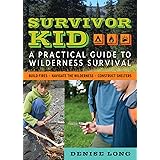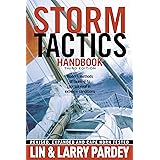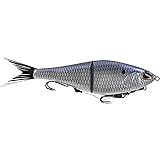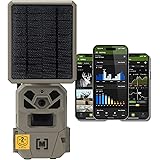Essential Survival Tips and Self-Defense Techniques: Mastering Preparedness for Any Situation
In today’s unpredictable world, feeling secure and prepared is more crucial than ever. Many individuals face a core concern: what if an emergency strikes? Whether it’s a natural disaster, a sudden urban crisis, or a personal threat, a lack of readiness can lead to fear and helplessness. Fortunately, acquiring practical knowledge and fundamental skills can transform uncertainty into confidence. The accompanying video offers a visual guide to numerous vital skills, but understanding the context and expanding on these concepts is equally important. This article delves deeper into the essential **survival tips and self-defense techniques** everyone should know, providing the crucial written detail to complement your visual learning.Mastering these foundational skills empowers you to protect yourself and your loved ones. It’s not about living in fear; it’s about cultivating resilience and capability. Imagine if you encountered an unexpected situation and knew exactly how to respond. That peace of mind is priceless.
1. Cultivating Situational Awareness: Your First Line of Defense
The most fundamental aspect of personal safety is not a physical technique but a mental discipline: situational awareness. This involves actively observing your surroundings and assessing potential threats before they materialize. It’s about being present and engaged with your environment, rather than being lost in thought or distracted by technology.
Imagine walking down a street. Instead of just seeing the ground in front of you, you scan ahead, check your periphery, and note exits. You observe people’s body language and any unusual activities. This constant, subtle scanning allows your brain to process information and flag anything out of the ordinary, giving you precious seconds to react.
Firstly, practice being observant in everyday scenarios. Notice who is around you, what they are doing, and where exits are located in any building. Secondly, trust your gut feeling. If a situation or person makes you uncomfortable, acknowledge that instinct and take steps to remove yourself. Your intuition is a powerful, built-in safety mechanism designed to warn you of danger.
Beyond this, understand the OODA Loop—Observe, Orient, Decide, Act. This military concept applies perfectly to self-defense. By observing and orienting yourself to a threat quickly, you can decide on a course of action and act before an aggressor can fully execute their plan. This cognitive advantage is often more effective than any physical counter-attack.
2. Mastering Basic Self-Defense Techniques for Personal Safety
While awareness is paramount, knowing a few core self-defense techniques can provide crucial confidence and capability. These aren’t about becoming a martial arts master overnight, but rather about effective, practical moves that can create distance or disable an attacker long enough to escape. Remember, the goal of self-defense is always escape, not to win a fight.
Firstly, focus on vulnerable targets. Eyes, nose, throat, groin, and knees are common areas where even a smaller individual can inflict significant pain or distraction. A sharp poke to the eyes, a palm strike to the nose, or a kick to the groin can create the opening you need. These are not about inflicting harm for harm’s sake, but about ensuring your survival.
Secondly, learn how to break free from common grabs. If an attacker grabs your wrist, twist your hand towards their thumb and pull. For a chokehold, tuck your chin, use both hands to pull down on one of their arms, and step away forcefully. Simple, practiced movements can be incredibly effective under duress. Practicing these movements with a partner can build muscle memory.
Crucially, shouting “No!” or “Help!” can startle an attacker and draw attention, which they generally want to avoid. Your voice is a powerful tool. Furthermore, consider carrying a personal safety device like a loud alarm or pepper spray (where legal). These tools can supplement your physical skills, offering an additional layer of protection in dire circumstances.
3. Critical Survival Skills for Any Situation: Beyond Basic Needs
Survival extends beyond immediate threats to personal safety; it encompasses preparedness for environmental and systemic breakdowns. The ability to find or purify water, create shelter, and signal for help are foundational **survival tips** that every individual should understand. These skills become invaluable when modern conveniences are no longer available.
A. Water Procurement and Purification
Water is the most critical element for survival; you can only last about three days without it. Knowing how to locate and purify water sources is therefore paramount. Imagine being stranded without potable water. Identifying natural springs, collecting rainwater, or even digging for groundwater can be life-saving.
Once water is sourced, purification is essential to prevent illness. Boiling water for one minute is the most effective method, killing most pathogens. Chemical purification tablets or a portable water filter are excellent additions to any emergency kit. Simply having these items in a “go-bag” can make a world of difference.
B. Shelter Building and Fire Starting
Protection from the elements is vital to prevent hypothermia or hyperthermia. Even in urban environments, knowing how to improvise shelter using available materials can offer critical protection. In a wilderness scenario, understanding how to construct a lean-to or debris hut can save your life from cold or heat exposure.
Fire serves multiple purposes: warmth, cooking food, boiling water, signaling, and psychological comfort. While modern lighters are convenient, knowing how to start a fire using friction (like a bow drill) or a ferro rod is a core survival skill. Always carry multiple fire-starting methods in your **emergency preparedness kit**.
C. Navigation and Signaling for Help
Getting lost can quickly turn a minor inconvenience into a life-threatening situation. Basic navigation skills, even without modern GPS, are essential. Learning to use a compass, read a topographic map, and even navigate by the sun and stars can guide you to safety. Furthermore, always inform someone of your route and expected return time.
If you are lost or injured, signaling for help is your priority. Three fires in a triangular pattern, three blasts of a whistle, or three flashes of a mirror are universal distress signals. Brightly colored clothing or a signal mirror can attract attention from search and rescue teams. Knowing these protocols can significantly shorten your rescue time.
4. Assembling Your Emergency Preparedness Kit: The Bug-Out Bag
Having a well-stocked emergency kit, often called a “bug-out bag,” is a cornerstone of being prepared. This bag should contain essentials to sustain you for at least 72 hours, covering basic needs if you need to evacuate quickly or if services are disrupted. This proactive step can alleviate significant stress during a crisis.
Your bug-out bag should include non-perishable food, at least one gallon of water per person per day, a first-aid kit, a multi-tool, flashlight with extra batteries, a whistle, and copies of important documents. Consider clothing layers suitable for your climate, an emergency blanket, and cash in small denominations. Personal hygiene items are also vital for maintaining morale and health.
Periodically review and refresh your kit. Food and water can expire, and batteries can drain. Furthermore, tailor your kit to your specific needs and location. An urban survival kit might emphasize different items than one for wilderness situations, though many core items overlap. Being ready with a comprehensive kit is one of the most effective **survival tips** you can adopt.











